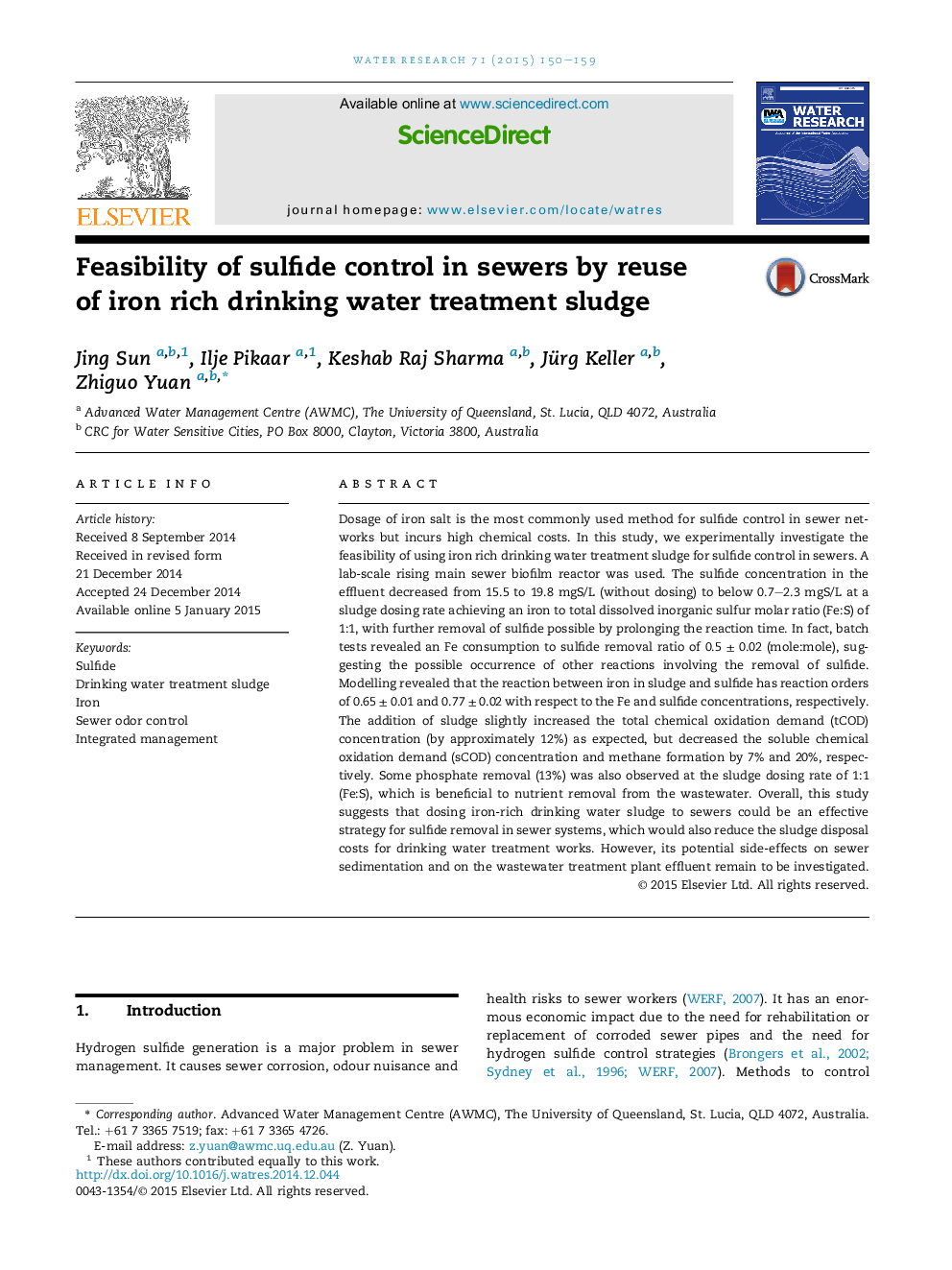| Article ID | Journal | Published Year | Pages | File Type |
|---|---|---|---|---|
| 4481175 | Water Research | 2015 | 10 Pages |
•Effective control of H2S in sewers by dosing iron rich drinking water sludge.•Molar ratios of 0.5–1 between iron and sulfide are required for complete control.•Sulfide removal rate is positively related to sulfide and iron concentrations.•Integrated and economical management of sewer odor and waste drinking water sludge.
Dosage of iron salt is the most commonly used method for sulfide control in sewer networks but incurs high chemical costs. In this study, we experimentally investigate the feasibility of using iron rich drinking water treatment sludge for sulfide control in sewers. A lab-scale rising main sewer biofilm reactor was used. The sulfide concentration in the effluent decreased from 15.5 to 19.8 mgS/L (without dosing) to below 0.7–2.3 mgS/L at a sludge dosing rate achieving an iron to total dissolved inorganic sulfur molar ratio (Fe:S) of 1:1, with further removal of sulfide possible by prolonging the reaction time. In fact, batch tests revealed an Fe consumption to sulfide removal ratio of 0.5 ± 0.02 (mole:mole), suggesting the possible occurrence of other reactions involving the removal of sulfide. Modelling revealed that the reaction between iron in sludge and sulfide has reaction orders of 0.65 ± 0.01 and 0.77 ± 0.02 with respect to the Fe and sulfide concentrations, respectively. The addition of sludge slightly increased the total chemical oxidation demand (tCOD) concentration (by approximately 12%) as expected, but decreased the soluble chemical oxidation demand (sCOD) concentration and methane formation by 7% and 20%, respectively. Some phosphate removal (13%) was also observed at the sludge dosing rate of 1:1 (Fe:S), which is beneficial to nutrient removal from the wastewater. Overall, this study suggests that dosing iron-rich drinking water sludge to sewers could be an effective strategy for sulfide removal in sewer systems, which would also reduce the sludge disposal costs for drinking water treatment works. However, its potential side-effects on sewer sedimentation and on the wastewater treatment plant effluent remain to be investigated.
Graphical abstractFigure optionsDownload full-size imageDownload high-quality image (189 K)Download as PowerPoint slide
